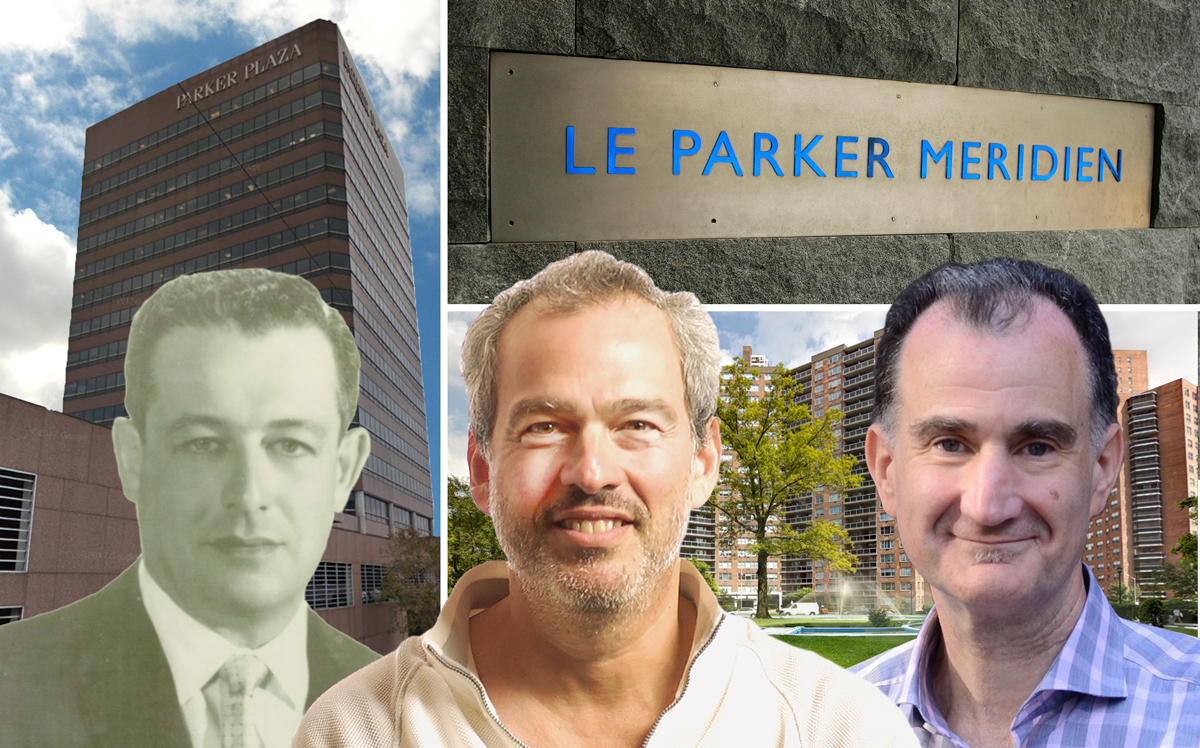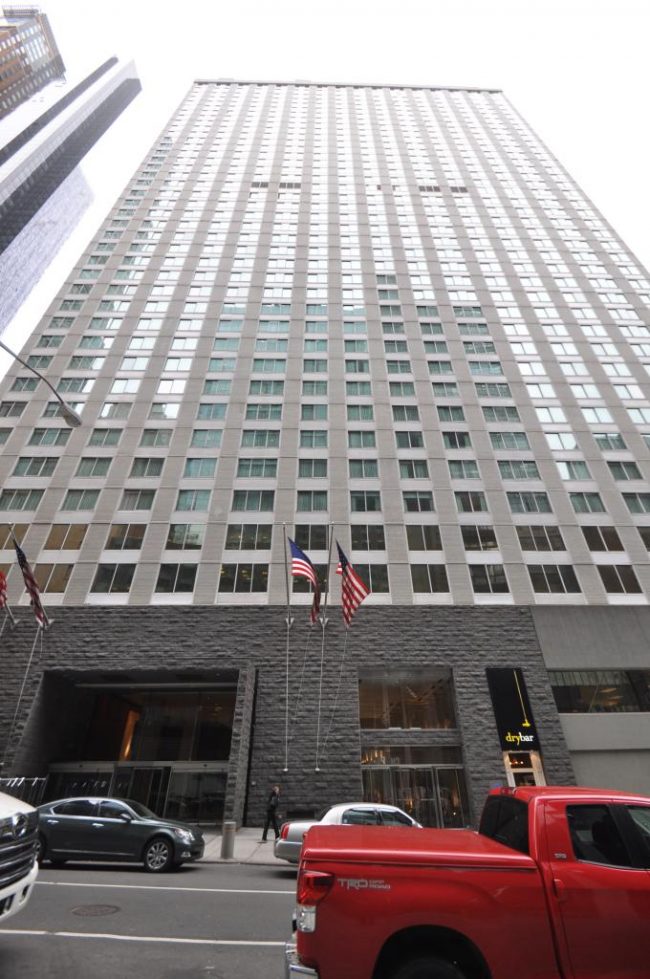Trending
Who is Jack Parker? Meet the development firm looking to sell all its NYC real estate
The 7-property “Parker portfolio” is said to be worth $1.5B

Some developers get their start in construction. But Jack Parker went a degree further.
Before pursuing real estate, Parker worked in the lumber business on the West Coast. He operated two mills, which he sold in 1954 before moving to New York.
He launched his namesake firm, the Jack Parker Construction Corporation, the following year and soon tackled three colossal projects in Queens that cemented his name within the real estate industry.
Although he died in 2007, his family-led firm – eventually known as the Jack Parker Corporation – has continued to make the occasional real estate play while quietly sitting on a mountain of valuable properties. But it may be the end of an era as the company now looks to unload seven properties across three states, including a multifamily component of more than 2,000 New York City apartments. That package, which just recently hit the market under the moniker the “Parker portfolio,” is said to be worth a total of $1.5 billion. A good chunk of the package could be reborn as pricey condominium conversions.
The Real Deal first reported on the multifamily component, which consists of the Parker Towers, Truffles Tribeca and the Biltmore. The portfolio also includes the 729-key Le Parker Meridien in Midtown; the 144-room Parker Palm Springs Resort in California; the 309,000-square-foot Parker Plaza office building in Fort Lee, New Jersey; and a 16,000-square-foot medical office condo unit on the Upper East Side, according to Real Estate Alert.
If the portfolio sells, the Jack Parker Corporation will be parting with all of its U.S. real estate – and nearly everything it owns. (The company also owns a 175-acre master-planned community in Costa Rica in addition to Burger Joint, a small chain with locations in Le Parker Meridien and Industry City, as well as in Dubai, Singapore and Brazil.)
Representatives for the company didn’t respond to requests for comment.
Parker’s past
The Jack Parker Corporation, which claims to have developed and managed at least 15,000 residences, gained a reputation over the decades as one of New York’s most active developers. Although the Parker name still adorns several of its properties, the company has spent the past decade flying under the radar.
In the 1950s and ‘60s, Parker built 380 single-family homes on the site of the old Bayside Golf Course, a 1,350-unit rental complex called Parker Towers in Forest Hills, and – in partnership with the Cord Meyer Development Corporation – the 562-unit Gerard Towers, according to articles in the New York Times and property records. Parker and Cord Meyer converted the latter complex into co-ops in 1984.

Le Parker Meridien
In the 1980s however, Parker shifted away from New York housing toward hotels with the opening of Le Parker Meridien, a 40-story luxury hotel on West 56th Street. The hotel’s well-regarded brunch spot Norma’s is named after Parker’s wife. The firm continued to develop and buy in Florida, New Jersey and California at that time.
The developer has not only developed rental buildings but also a handful of condos including the Knickerbocker, a 75-unit Lenox Hill condo that opened in 1997. Like many of New York’s real estate dynasties, Parker rarely sold its holdings.
Parker retired in the 2000s and let his family take the reins. He died in 2007, at the age of 91.
During that decade, the Queens-based company pulled off two major rental projects. In 2003, the firm partnered with Joseph Moinian’s Moinian Group to develop a 464-unit Midtown rental tower at 271 West 47th Street called the Biltmore. The building was named after the historic theater next door, which at the time was shuttered and is now known as the Samuel J. Friedman Theatre. And in 2009, the firm developed a 291-unit rental building called Truffles Tribeca at 34 Desbrosses Street.
The company tested the market when it tried to sell Le Parker Meridien in 2016, and bids topped out at around $450 million. Sources told Real Estate Alert that the failed attempt led some real estate players to question the firm’s determination to sell.
The future
The Parker family’s vast multifamily holdings could have a second life as condos.
Newmark Knight Frank, which was hired to market the entire portfolio, has been showing the properties to prospective buyers this week, sources said.
Marketing materials obtained by TRD show that the rental-to-condo conversion could result in expensive sellouts at three residential properties. The projected sellouts are $678.5 million for Truffles Tribeca; $473.4 million for 367 of the apartments at the Biltmore; $202.5 million for 432 of the apartments at Parker Towers, documents show. Development costs are estimated to total $77 million – $24.1 million, $31.1 million and $20 million respectively.
At the Truffles Tribeca, pricing is particularly high. One-bedrooms – the dominant unit type – would ask an average $2.2 million, or $3,460 per square foot.Three-bedrooms would ask an average of $4.3 million, or $3,360 per foot. If it stays a rental, the gross potential rental income could climb as high as $21.9 million in 11 years, documents show.

Truffles Tribeca
The conversion stats are especially noteworthy given the Jack Parker Corporation has long been opposed to converting its rental apartments holdings to condos or co-op, aside from the Gerald Towers in Queens. In 1986, at the height of the co-op conversion boom, Stanley Berkowitz, then an executive at the firm, told the Times that they would not convert Parker Towers. Conversions are a “tremendous job that takes a lot out of you,” he said at the time.
After Parker stepped down, his grandson Adam Glick and great grandson James Curnin took on greater roles at the company, acting as president and vice president, respectively. Steven Pipes, whose background is in managing the other Le Meridien hotels in San Francisco and Vancouver, also serves as president, according to his LinkedIn profile. And in Florida, John Reisman, another of Parker’s grandsons, is president.
In recent years, Glick, the son of Parker’s daughter and noted art collector Nancy Magoon, has had his sights set elsewhere. According to his biography on the website Big Think, Glick is also a managing director at the hedge fund Tesuji Partners and co-founded a seemingly defunct online academic institution called the Floating University.
He is also said to be a composer, playwright and author of the book “A Child’s Guide to Money.”
Glick was also cited in a synagogue’s 2013 newsletter on the website Agudah South for sharing a story about wealth and value with Rabbi Mordechai Kamenetzky. Kamenetzky wrote that Glick had told him of a story in which an affluent man decided to take up fishing and, after he rented a Vermont cottage, attempted to buy nearly everything in a nearby fishing shop. In the story, the man picked up pricey, hand-painted fishing lures and asked the shop’s elderly owner, “Do fish really go for these?” The owner replied, “Don’t know. I don’t sell to fish.”
“We think we are purchasing them for lofty reasons and negate the fact that perhaps selfishness and insecurity are the driving forces behind the proverbial sale,” the rabbi wrote. “We buy them thinking that they are the items that will catch the fish, but ultimately, we are the only ones caught!”
Adam Pincus contributed reporting.




